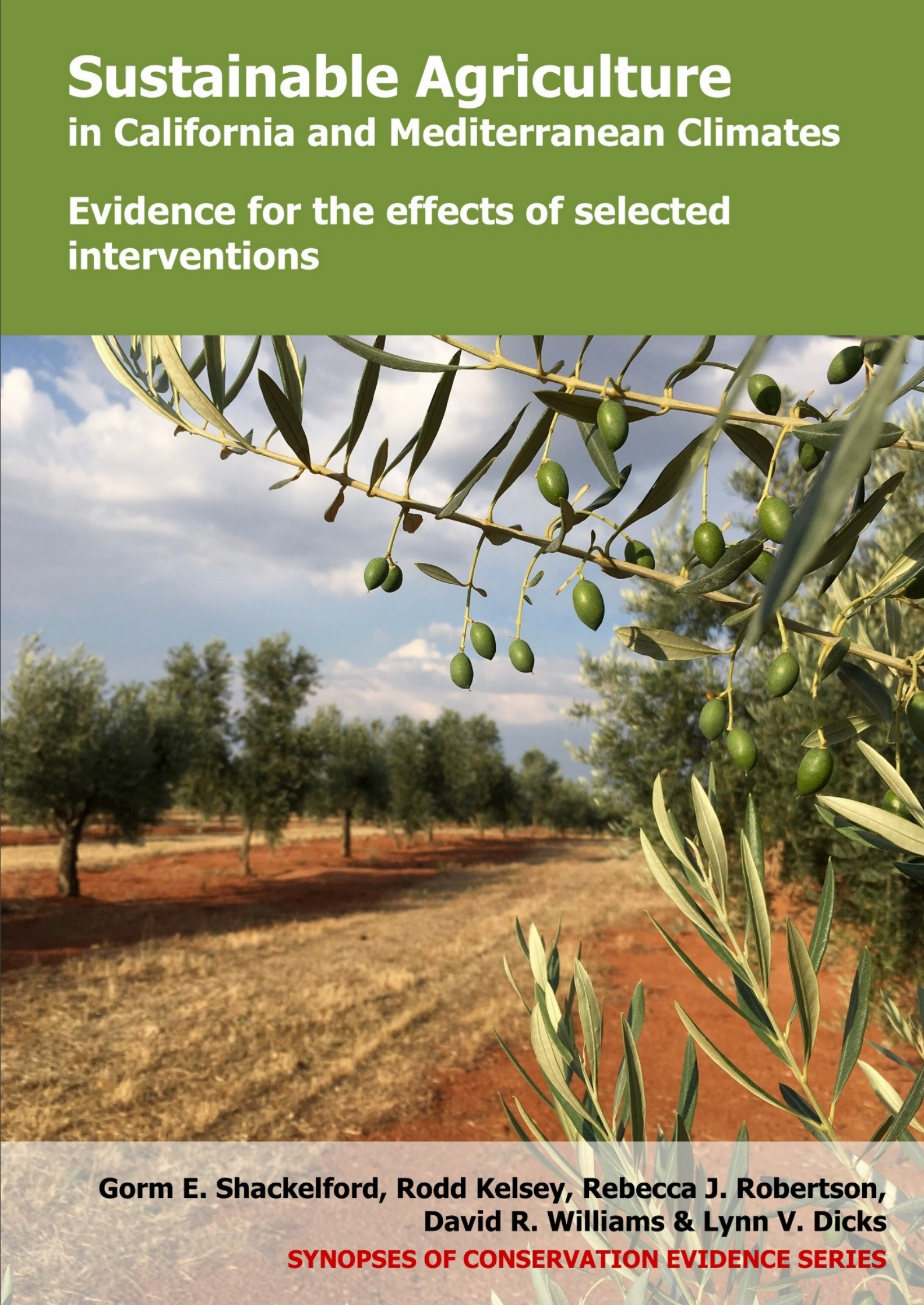Other biodiversity: Plant or maintain ground cover in orchards or vineyards
-
Overall effectiveness category Unknown effectiveness (limited evidence)
-
Number of studies: 3
View assessment score
Hide assessment score
How is the evidence assessed?
-
Effectiveness
80% -
Certainty
20% -
Harms
0%
Study locations
Supporting evidence from individual studies
A replicated site comparison in 2001 in olive orchards on the island of Lesvos, Greece, found more species and higher cover of flowering plants in managed orchards (with tilled soils and ground cover dominated by annual plants), compared to unmanaged orchards (without tilled soils, and with ground cover dominated by perennial plants). Implementation options: More species and higher cover of flowering plants were found in managed orchards, compared to abandoned orchards (38 vs 25 species/site, 5,235 vs 770 cm2/site). Methods: Three managed orchards were compared to three abandoned orchards (1 ha each). Open flowers that could potentially be visited by bees were sampled three times/site in March–May (50 x 0.4 m transects).
Study and other actions testedA replicated, randomized, controlled study in 2001–2008 in a chestnut orchard in northeast Portugal found more mushrooms and mushroom species in plots with cover crops (without tillage), compared to plots without cover crops (with conventional tillage). Fungi: More mushrooms, more mushroom species, and greater mushroom diversity were found in plots with cover crops, compared to plots without cover crops (85–115 vs 20 kg fresh weight/ha; 18–23 vs 11 species; diversity reported as Shannon Index). Implementation options: Fewer mushrooms and fewer mushroom species were found in plots with seeded cover crops, compared to resident vegetation (85 vs 115 kg fresh weight/ha; 18 vs 23 species), but there was no difference in mushroom diversity (reported as Shannon Index). Methods: There were three plots for each of two treatments (resident vegetation or grasses and legumes, sown in 2001; both without tillage), and there were three control plots (conventional tillage, 15–20 cm depth, thrice/year). Each plot (600 m2) had six chestnut trees (40 years old in 2001) and was fertilized but not irrigated. Mushrooms were collected in 2006–2008 (weekly in May–July and September–November, under three trees/plot). It was not clear whether these results were a direct effect of cover crops or tillage.
Study and other actions testedA site comparison in 2012–2013 in three irrigated vineyards in the Ronda Mountains, southern Spain found more birds and higher bird diversity in a vineyard with mown resident vegetation (without tillage), compared to bare soil (with conventional tillage), between the vine rows. Birds: The most birds and bird species, and highest diversity, were found in a vineyard with resident vegetation, and the fewest birds and bird species, and lowest diversity, were found in a vineyard with bare soil (59 vs 33 birds/hour, 6.5 vs 3 species, diversity reported as the Shannon index). Implementation options: More birds and bird species, and higher bird diversity, were found in a vineyard with mown resident vegetation, compared to a vineyard with herbicide-treated resident vegetation (59 vs 36 birds/hour, 6.5 vs 3.9 species). Methods: Resident vegetation between the vine rows was mown in one vineyard (January–February and May), treated with herbicide in a second vineyard (January–April; tillage in November), and treated conventionally in a third vineyard (herbicide in January–April; tillage in January–February, May–August, and November). Larger habitat patches with different configurations (mean shape index), were found in the landscape surrounding the mown vineyard, compared to the other two. Birds were sampled on 34 days in May–July 2012–2013 (ten-minute counts of birds within 50 m, at three random points/vineyard/day, at dawn and dusk). It was not clear whether these results were a direct effect of resident vegetation, herbicide, tillage, or habitat patches in the landscape.
Study and other actions tested
Where has this evidence come from?
List of journals searched by synopsis
All the journals searched for all synopses
This Action forms part of the Action Synopsis:
Mediterranean Farmland
Mediterranean Farmland - Published 2017
Mediterranean Farmland synopsis





)_2023.JPG)














